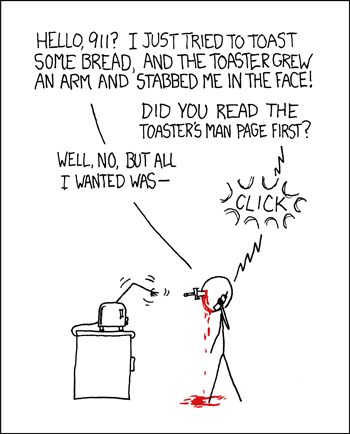Last monday I attended a fascinating conference by Robert Laughlin (who won a Nobel Prize for his remarkable work on fractional quantum hall effect). The meadow of his arguments is this: the behavior of the world is ultimately governed by emergent phenomena.
Let's say a kid wants to know how some simple device works, he will surely try one thing: dissasembling the device, look at each part and figure out how they work. This is what Laughlin calls the reductionist approach. Physicis has been carried this way for the past centuries, this is how we arrived to our knowledge of elementary particle physics, by dissambling the matter in to smaller chunks at increasing energies.
Emergent phenomena arraises when collective behavior suddenly becomes different from the behavior of it's individual parts, this pinpoints to one of the fundamenal characteristics of emergent phenomena: universality. This means that the collective behavior is esentially independent of the properties of it's individual parts.
This was exemplified in a funny way by Laughlin who showed Newton burried under a big pile of apples, which is an obviously different behavior from that single apple in Woolsthorpe. Note that for the sake of beeing buried under a big pile of something it won't make a difference to be buried beneath apples, watermelons or potatoes.
One of the really perturbing things mentioned by Laughlin was that Newton's first law is actually emergent and comes from a broken symmetry, this was totally unexpected for me, but maybe one enlightned reader can bring some light to this issue (please!).
But, are fundamental laws of physics emergent? There is no doubt that emergent phenomena is important and quite interesting. And of course, every reasonable physicist will tell you that we don't need to know the detailed behavior of quarks or QED for describing biology or weather.
Whatsoever I don't honestly believe we can have a complete/satisfactory knowledge can be acquired in this way, we actually need to know from where this laws emerge from. As an example, how are we going to figure (say) the properties of fundamental particles? It seems to me that if you keep asking "why?" you eventually need a detailed description, the sort of fundamental physics we have always think about.
And, this might be just a wrong perception but it seems to me that the "reductionist approach" is far more general, at least in the sense we only need to know the law of gravity (and dynamics, of course) to compute the behavior of an arbitrary number of apples, this also applies to any other system where gravity is acting. On the other side you need to have a "lot's of falling things law", "orbital's motion law", "single falling ball law", etc...
Let's say a kid wants to know how some simple device works, he will surely try one thing: dissasembling the device, look at each part and figure out how they work. This is what Laughlin calls the reductionist approach. Physicis has been carried this way for the past centuries, this is how we arrived to our knowledge of elementary particle physics, by dissambling the matter in to smaller chunks at increasing energies.
Emergent phenomena arraises when collective behavior suddenly becomes different from the behavior of it's individual parts, this pinpoints to one of the fundamenal characteristics of emergent phenomena: universality. This means that the collective behavior is esentially independent of the properties of it's individual parts.
This was exemplified in a funny way by Laughlin who showed Newton burried under a big pile of apples, which is an obviously different behavior from that single apple in Woolsthorpe. Note that for the sake of beeing buried under a big pile of something it won't make a difference to be buried beneath apples, watermelons or potatoes.
One of the really perturbing things mentioned by Laughlin was that Newton's first law is actually emergent and comes from a broken symmetry, this was totally unexpected for me, but maybe one enlightned reader can bring some light to this issue (please!).
But, are fundamental laws of physics emergent? There is no doubt that emergent phenomena is important and quite interesting. And of course, every reasonable physicist will tell you that we don't need to know the detailed behavior of quarks or QED for describing biology or weather.
Whatsoever I don't honestly believe we can have a complete/satisfactory knowledge can be acquired in this way, we actually need to know from where this laws emerge from. As an example, how are we going to figure (say) the properties of fundamental particles? It seems to me that if you keep asking "why?" you eventually need a detailed description, the sort of fundamental physics we have always think about.
And, this might be just a wrong perception but it seems to me that the "reductionist approach" is far more general, at least in the sense we only need to know the law of gravity (and dynamics, of course) to compute the behavior of an arbitrary number of apples, this also applies to any other system where gravity is acting. On the other side you need to have a "lot's of falling things law", "orbital's motion law", "single falling ball law", etc...


